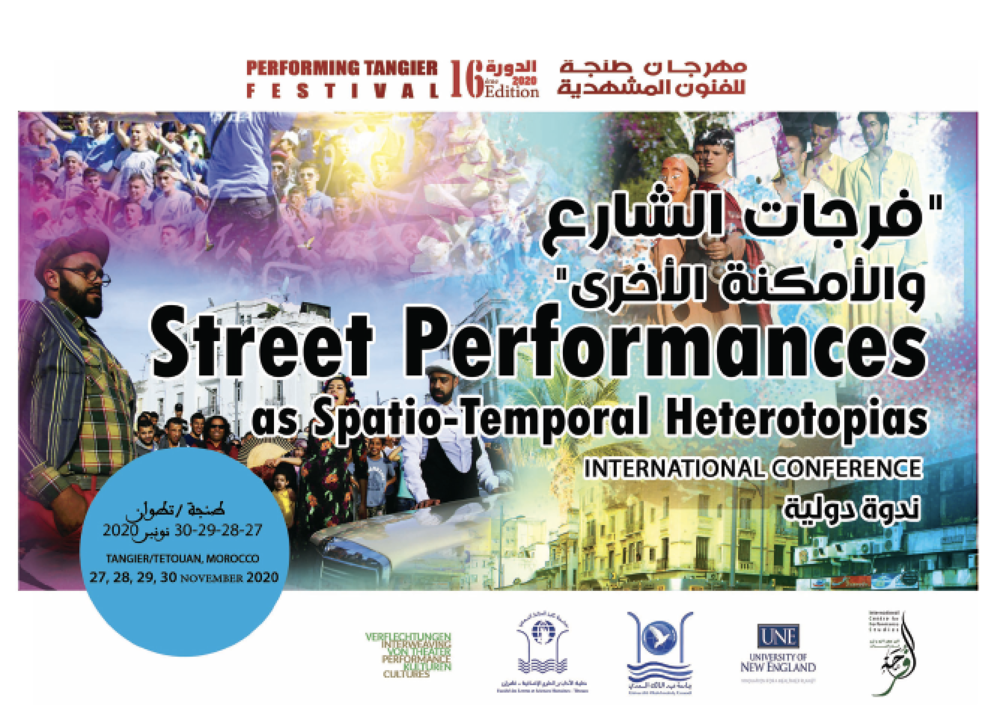PERFORMING TANGIER FESTIVAL 2020 – 'Street Performances as Spatio-Temporal Heterotopias'
News from Nov 27, 2020
16th PERFORMING TANGIER FESTIVAL – ‘Street Performances as Spatio-Temporal Heterotopias’
Friday 27th – Monday 30th of November 2020 | Live-Stream available
Despite the restrictions imposed on street performances in many big cities – most recently, of course, due to the Covid-19 pandemic and before through general forms of legislating the performing body in accordance with codes of conduct – their evolution in new artistic directions has blurred the usual boundaries of the performing landscape/artscape. This can be seen as a return to ‘origins’ in which streets, public squares, open spaces, and even football stadiums are added again to an always-changing performance topography. Artistic performances in non-conventional spaces, including street performances and public poems are sometimes highly heterotopic places that are “linked to slices in time” (Foucault), whereby a break with traditional time is produced. This aspect shows that street performances can be “counter-sites, a kind of effectively enacted utopia in which the real sites, all the other real sites that can be found within the culture, are simultaneously represented, contested, and inverted” (Foucault). Street performances are constitutive parts of their locations and are often not only meant to entertain or to educate or to foster religious experiences, for example, but also to restructure the spectator’s experience of specific locations through the artist’s intervention in place making. It is an art that is often inscribed in other spaces that can be highly codified such as historical public squares or other urban open spaces, among others. The co-constitutive relationship between the performance and the topography and morphology of its location and surrounding atmosphere (be it the street or other outdoor place) is both intricate and intriguing insofar as there is no ‘outside’: Street performances invite methodological inquiry as much as they problematize memory and history through a trans-historical intervention. They can temporarily remove spectators out of their societally assigned roles and identities and cast them, albeit momentarily, into new ones. However short-lived such experiences may be, spectators witnessing street performances can come ‘back’ and ‘out’ as changed individuals; they are no longer the same.
Program & Live-Stream
- Find the final program here: https://www.facebook.com/interweaving.performance.cultures
- For Live-Stream – starting on Friday, November 27, 5 pm (UTC+1) – go to: https://furja.ma/ar

